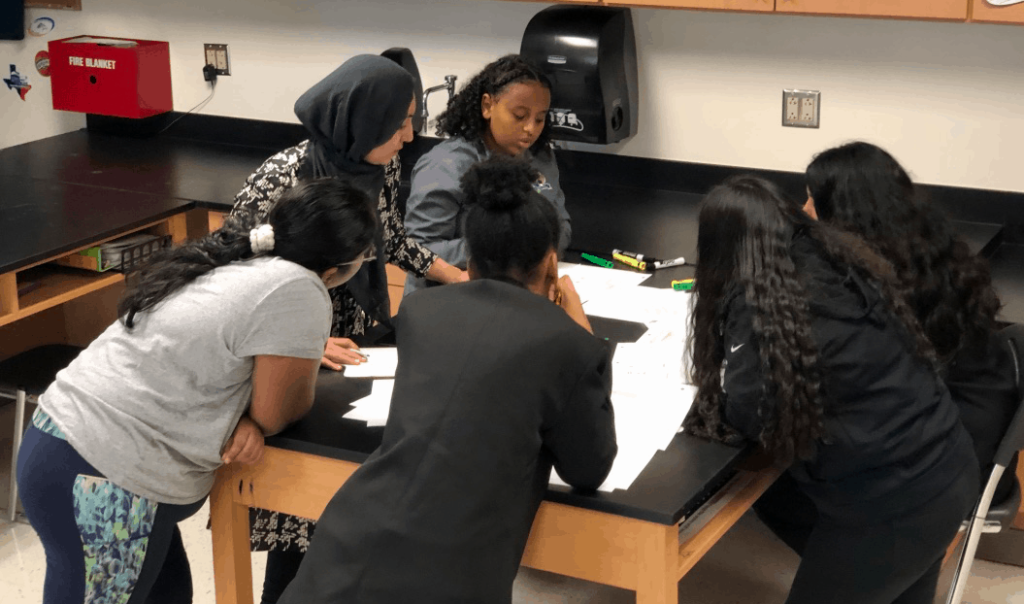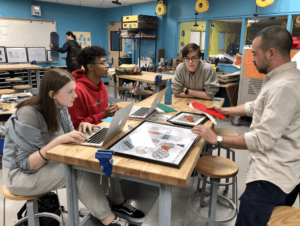Economic Mobility High: The New End Game for America’s High Schools

High schools celebrate graduates who share their hopes and dreams that mostly include a postsecondary plan with aspirations to make a difference in the world. Post-graduation, high school leaders exhale and often turn their attention to the next class of students. After these high school seniors graduate, how much attention do we pay to their success in college, careers, and life? How do we look at success beyond high school by race, gender, and economic status of students to ensure students from our community thrive? What is the role of the American high school leader in owning the success of students beyond high school?
What if we thought of high school less in terms of test scores and more in terms of economic contribution to our communities? High schools can and should be the economic development engines of our communities.
The ideal finish line is no longer college admissions, it’s a viable pathway to high wage employment–and that may or may not include a traditional college experience. The new finish line is a secure grasp on the first few rungs of a lifelong earn and learn ladder.
Heading in the Right Direction
Texas, through House Bill 3, placed a premium on school districts owning the success of students beyond high school. The Bill plans for a vibrant Texas economy by investing in inequitable college and work outcomes. School districts must now set equity goals for college and career success that includes college and career readiness, college enrollment, and college and work attainment rates by race, gender, and economic status. For every student that tests college-ready and enrolls in college, tests college-ready and earns an industry-recognized credential, or tests military ready and enlists in the military, school districts receive significant new outcomes bonuses. These bonuses are weighted by economic status so that low-income communities receive more dollars for producing valued outcomes to reinvest in talent and drive a strong Texas economy.
School networks like KIPP and Uplift Education have prioritized the road to and through college. As charter school organizations that have to raise funds to match the level of investment in traditional public schools, they must demonstrate a clear return on investment in college enrollment, completion, and job placement. KIPP and Uplift invest in college and career advising with a robust and individualized plan for every student with the personalized support to succeed. Additionally, they prioritize investments in alumni coordinators who stay with students through college completion and job entry. This economic mobility value proposition is a powerful message to parents, students, investors, community leaders, and industry partners.
About 60 schools in 25 districts in metro Kansas City (both Kansas and Missouri districts) are making high school more valuable to young people by incorporating more real-world learning including internships and client-connected projects, three classes of college credit, industry-recognized credentials and entrepreneurial experiences.
Economic Mobility High
How many high school leaders truly view their role as leaders of economic mobility? High schools have a major role in creating a path to economic mobility in the face of significant systemic barriers like racism, poverty, under-resourced communities, outdated state accountability plans, and insufficient data systems.
There are four ways school, system, and community leaders can help create economic mobility in high schools.
1. New Goals & Investments: Current state accountability systems focus on testing, students having a touch of college and/or careers, and minimum high school graduation requirements. We must be bold in setting new goals and shift financial resources to invest in those goals where every student:
- Demonstrates college and career readiness (via traditional readiness tests and industry-aligned tools like NROC and ALEKS);
- Conducts several community-connected projects that result in public products of value to the learner and community (products worth adding to a resume and LinkedIn profile);
- Earns a minimum of 12 to 15 transferable college credits;
- Earns an industry-recognized certification that includes authentic work-based experience with a trained career mentor who helps verify key employability skills like teamwork, work ethic, and the ability to clearly communicate in the workplace;
- Enrolls in valuable postsecondary learning (including skill trades) with the financial aid and support they need to persist to graduate on time and/or is hired in a good job with a path to a living wage; and
- Starts a business or launches a sustainable impact initiative.
2. Personalized Advice: Every learner deserves sustained adult relationships that monitor academic and social growth and provide personalized guidance from picking the right courses and projects to making an informed postsecondary plan.
Advisors know and care if learners are at school, they understand context variables, they listen and help uncover strengths and interests. They also push learners outside their comfort zone, they facilitate work-based learning experiences that stretch imagined possible futures, and they help build social capital in ways that expand opportunity.
3. Regional Partnerships: With clear and ambitious goals, it is obvious that high schools cannot do this work in isolation. The work of economic mobility must rest in a regional plan with both higher education and workforce taking the lead in key areas. Talented high school leaders are at the table defining:
- Higher Ed Innovation & Data Sharing: Higher education must provide the new “programming” that scales and serves students equitably to achieve 15 transferable college credits and an industry-based certification for ALL students as a minimum bar. Additionally, higher education must share data back with high schools in real-time if high schools are to invest in alumni coordinators and support.
- Workforce Investment & New Models: Workforce must invest in providing real work-based learning experiences that scale so ALL students have a path to an internship, industry-recognized credentials, and set of verified employability skills.
- Community Accountability: It is often difficult for school districts and schools to run new data reports on new goals that actually matter for building an effective and equitable regional talent pipeline. An external group like a regional chamber of commerce or collective impact organization can be a tremendous partner by publishing regional scorecards and convening community leaders to support new and courageous school leadership.
4. Modern Data Systems: One of the blockages to an equitable talent pipeline is the lack of sharing information that empowers students and those that serve them across K12, higher ed, and work.
- Student Agency (Hyper-Ledger): When a student earns college credit, an ACT score, a verified badge on teamwork from an employer, they must see it verified in real-time (like a verified LinkedIn profile).
- Effective Case Management (CRM): When students earn valued skills and credentials aligned to new bold goals, school personnel must be able to see the same information to better case manage student success.
Dallas County high schools are served by one of the best current examples of modern data systems.
Today’s courageous high school leaders are embracing economic mobility and closing the hope gap that many students and families face. They feel an intense sense of responsibility not only to set students up for success beyond high schools, but to also actually build an intentional plan, redeploy dollars and resources, and build the measurement capabilities to ensure that all students realize their dreams and potential to experience success in college, careers, and life.
For more, see:
- Incubate, Replicate and Scale: How Dallas is Creating Great High School Options
- Making Dallas Schools Work for Students, Teachers, and Business
- Boosting Career Readiness in Dallas
- Dallas County Promise: Leveraging Ed-Fi Technology for College & Career Readiness
Stay in-the-know with innovations in learning by signing up for the weekly Smart Update.







0 Comments
Leave a Comment
Your email address will not be published. All fields are required.